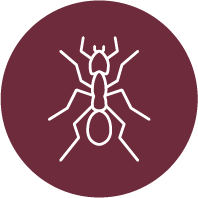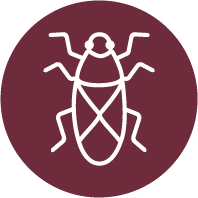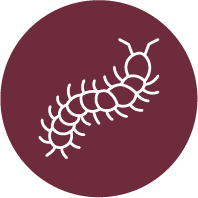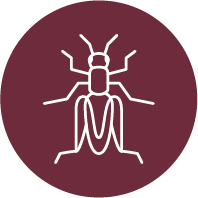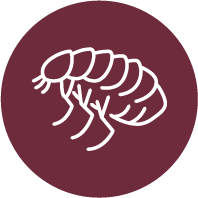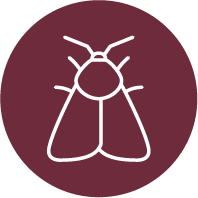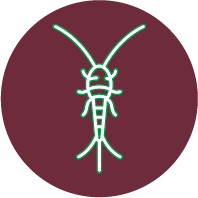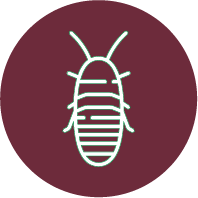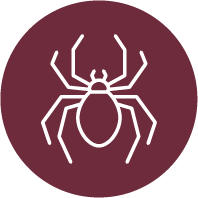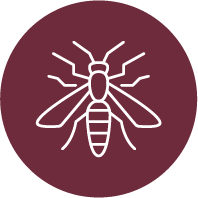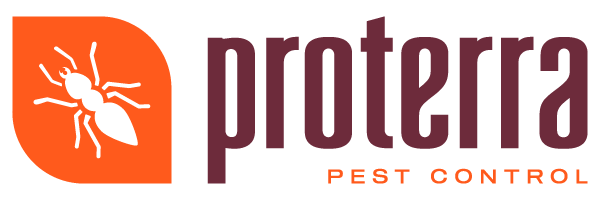How to Identify a Bed Bug Infestation in Your Home
Bed bugs are a troubling issue for many residents in Pasco, Washington. These tiny pests can cause significant discomfort and anxiety due to their elusive nature and the difficulty in eradicating them once they invade a home. Understanding the characteristics of bed bugs and implementing effective prevention and management strategies are vital for maintaining a comfortable living environment.
Understanding Bed Bugs
Bed bugs are small, wingless insects, typically reddish-brown in color, and about the size of an apple seed. Despite their diminutive size, they are skilled at avoiding detection. These nocturnal pests feed on the blood of humans and animals, usually during the night. It's a common misconception that bed bugs only infest dirty homes; they can thrive in clean environments as long as they have access to a food source.
In homes, bed bugs often hide in cracks and crevices, especially in mattresses, bed frames, and upholstered furniture. Their ability to hide effectively allows them to go unnoticed for long periods, leading to rapid population growth.
Recognizing Early Signs of Infestation
Detecting the early signs of a bed bug infestation is crucial to stopping its spread. Visual clues include small blood spots on bedding, fecal stains, and shed skins. These signs are often located in the seams of mattresses, around bed frames, and in furniture joints.
Another indication of bed bugs is the presence of bites and itching. The bites often appear in clusters or lines on exposed skin, causing significant discomfort. Early detection is essential for addressing the problem before it escalates.
Common Causes of Bed Bug Infestations in Pasco
Pasco, like many other areas, experiences bed bug infestations due to several factors. Increased travel and the movement of people play a significant role in spreading these pests. Travelers may unknowingly bring bed bugs home in their luggage or clothing after staying in infested accommodations.
Second-hand furniture and clothing can also be sources of bed bugs. Purchasing used items without thoroughly inspecting them can introduce these pests into a home. The moderate and humid climate in Pasco supports the survival and reproduction of bed bugs.
Prevention Strategies
Preventing bed bug infestations requires regular home inspections. This involves checking mattress seams, bed frames, and furniture for signs of bed bugs. When traveling, it is wise to inspect hotel rooms thoroughly and store luggage off the floor to reduce the risk of bringing bed bugs home.
Maintaining cleanliness and reducing clutter in living spaces can also help prevent infestations. Clutter provides hiding spots for bed bugs, making it easier for them to thrive unnoticed. Sealing entry points and using protective covers on mattresses and box springs can further reduce the likelihood of an infestation.
Effective Treatment Options
Addressing bed bug infestations can be achieved through non-chemical approaches such as heat treatments and steam cleaning. These methods involve raising the temperature in infested areas to levels that are lethal to bed bugs.
Safe chemical treatments, including the use of eco-friendly pesticides, are also available. These options are designed to minimize harm to humans and the environment while effectively targeting bed bugs. In severe cases, professional pest control services may be necessary. Experts can assess the situation and implement comprehensive treatment plans to eradicate bed bugs.
Best Practices for Affected Areas
After treating a bed bug infestation, it's important to follow best practices to ensure the pests do not return. This includes detailed cleaning processes, such as washing and drying fabrics at high temperatures to kill any remaining bed bugs and eggs.
Isolating and treating infested items is also recommended. This can involve sealing items in plastic bags or containers to prevent the spread of bed bugs. Regular monitoring post-treatment is essential to detect any signs of a recurring infestation.
The Importance of Community Awareness
Community awareness is a crucial component in managing bed bug infestations. Educating neighbors and community members about prevention and treatment strategies can help reduce the spread of these pests. Local initiatives and workshops in Pasco aim to provide residents with the knowledge and tools needed to tackle bed bug problems effectively.
Building a community response plan can also enhance efforts to address infestations. By working together, residents can share resources and information, making it easier to manage and prevent bed bug issues in the area.
The Role of Education in Bed Bug Management
Education plays a pivotal role in preventing and managing bed bug infestations. Providing resources and information to residents can empower them to take proactive measures. Workshops and seminars can equip individuals with the knowledge needed to identify early signs of infestation and implement effective prevention strategies.
School programs can also contribute by educating children about bed bugs, enabling them to recognize signs of infestation at home. By instilling awareness at an early age, communities can foster a culture of vigilance and prevention.
Technological Advances in Bed Bug Detection
Recent technological advances have introduced new methods for detecting bed bugs. Devices equipped with sensors and cameras can identify bed bug activity in real time, offering a more efficient way to monitor infestations. These tools can be particularly useful in large buildings or apartment complexes where manual inspections are challenging.
Innovations in detection technology are continually evolving, providing new opportunities for effective bed bug management. As these technologies become more accessible, they can significantly aid in early detection and prevention efforts.
The Economic Impact of Bed Bug Infestations
Bed bug infestations can have significant economic implications for homeowners and businesses. The costs associated with treatment, replacing infested items, and potential business disruptions can be substantial. For hotels and rental properties, infestations can lead to negative reviews and loss of clientele.
Understanding the economic impact of bed bugs highlights the importance of prevention and early intervention. By investing in regular inspections and effective treatment strategies, property owners can mitigate financial losses and maintain their reputations.
Effectively managing bed bug infestations requires a combination of knowledge, vigilance, and community involvement. By staying informed and taking proactive measures, residents of Pasco can protect their homes from these persistent pests. The collaboration between individuals, communities, and pest control professionals is essential for creating a bed bug-free environment. By fostering awareness and utilizing innovative detection and treatment methods, Pasco can effectively combat bed bug infestations and maintain a comfortable living space for its residents.
For professional assistance in dealing with bed bug infestations,
reach out to Proterra Pest Control today. Our experts are equipped with the knowledge and tools to help you effectively manage and prevent bed bug problems.
